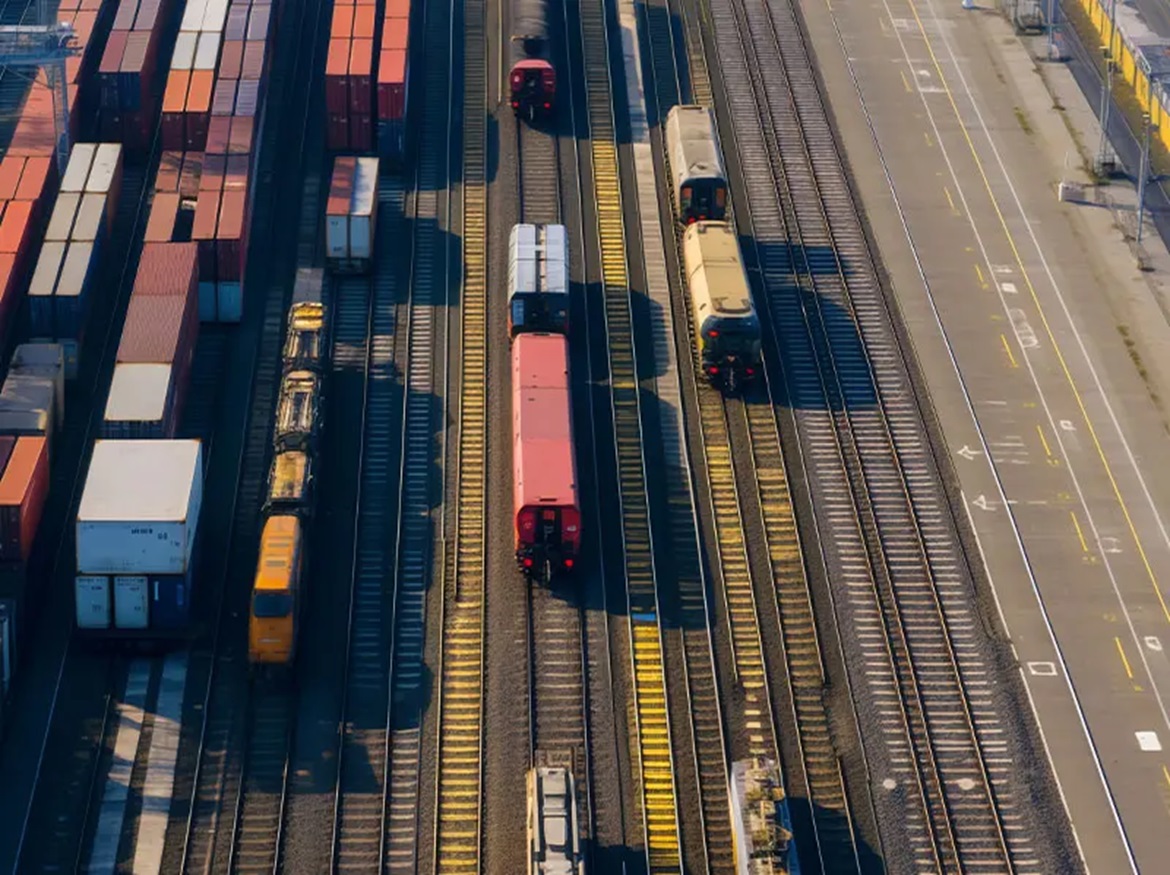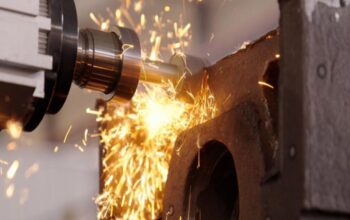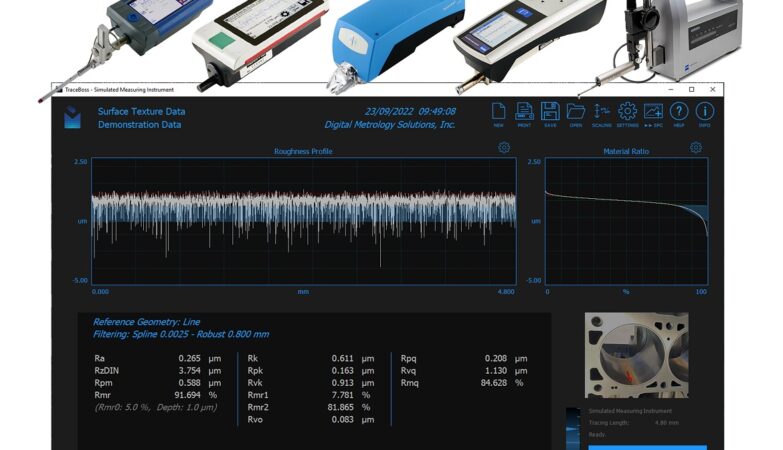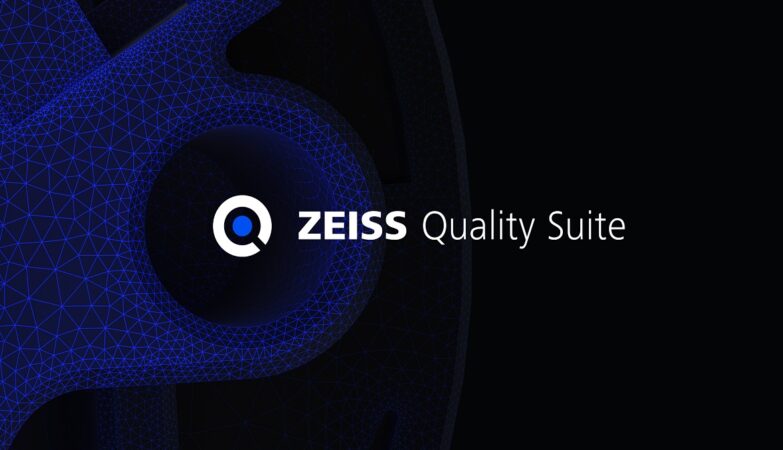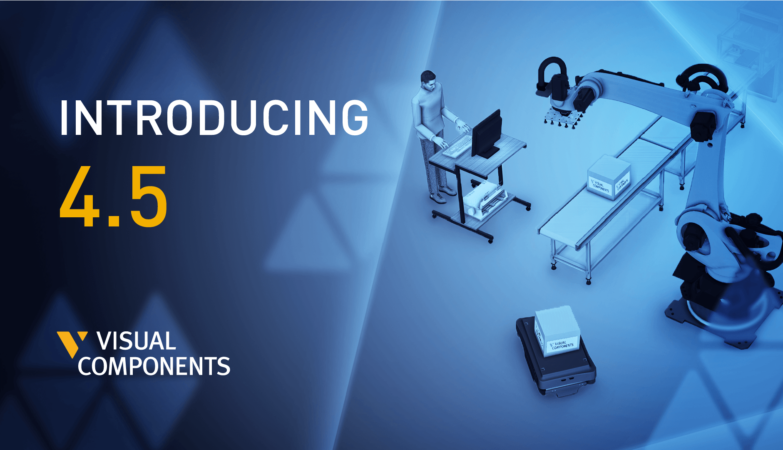In the world of logistics and transportation, efficiency and precision are crucial, especially when moving bulky and heavy goods.
The large items pose unique challenges for transportation due to their size and complexity. Efficient planning and management are crucial to ensure safety and cost-effectiveness.
The logistics demand assessment takes into account critical factors like volume, weight, and shape.
By gaining a precise understanding of these characteristics, logistics professionals can make informed decisions regarding the choice of transportation tools and loading/unloading equipment.
What Does the Logistics Company Need?
Our client, one of the largest German logistics companies specializing in rail transportation, is looking for a solution to accurately measure the dimensions of vehicles that come in different colors and sizes.
Accurate recording of vehicle dimensions is essential to ensure they seamlessly fit into their intended mode of transportation, thereby enhancing both efficiency and safety.
In addition, they need 3D data to serve as valuable resources for subsequent analysis and strategic planning.
When transport conditions evolve or new vehicles are introduced, these reference models facilitate the identification and proactive resolution of potential issues.
This need has led to a development that makes the traditional manual method of using a tape measure largely redundant.
The introduction of 3D scanning technologies, the TrackScan-Sharp, is revolutionizing the way logistics company measures their vehicles and plan their loads.

Shortcomings of Existing Measurement Methods
Currently, our customer relies on manual measuring equipment, specifically tape measures, for measurements. Unfortunately, this approach is time-consuming, prone to high measurement uncertainty, and incapable of capturing complex geometries like curvatures.
Moreover, the susceptibility to errors due to incorrect readings or inadequate documentation of measured values is significantly elevated with the current method. Consequently, the logistics planning process suffered from delays, inaccuracies, and overall inefficiencies.
Measurement Challenges
Fast Speed Requirement: Our client seeks a solution that can swiftly acquire data without compromising accuracy. Specifically, the goal is to scan a car within approximately 20 minutes.
Comprehensive Data Acquisition: Logistic vehicles exhibit diverse shapes and sizes, often featuring intricate curves and irregular surfaces. Additionally, these vehicles have black and shiny surfaces that require measurement without the use of spray. Therefore, an advanced measuring approach capable of handling these complexities is strongly preferred.
Reliable Reporting: The measurements need to be error-free, resulting in a reliable report that consistently provides precise data.
The Solution: TrackScan-Sharp
The optical 3D measurement system TrackScan–Sharp emerged as the ideal solution for our client. Specifically designed for scanning larger objects, TrackScan-Sharp efficiently captured the car’s hood, doors, and so on without repositioning its trackers frequently. The scan led to precise 3D data which was imported as accurate 3D models of the entire car.
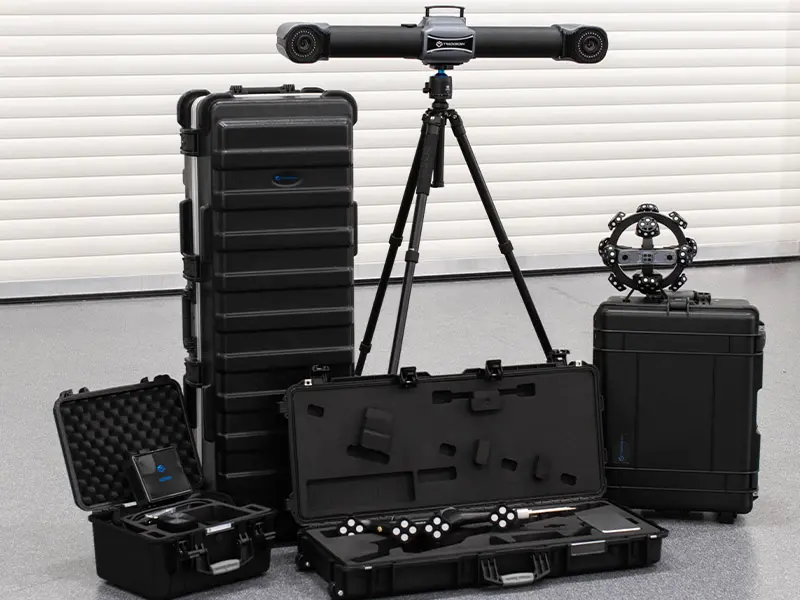
Benefits of using TrackScan-Sharp
Fast Data Acquisition
The system facilitated accurate and efficient recording of vehicle dimensions. In contrast to the traditional approach, which demanded extensive labor and manual measurements, the TrackScan-Sharp significantly streamlined the process.
With a mere 20 minutes for scanning and an additional 10-15 minutes for data analysis, the overall time required was significantly reduced.

The TrackScan-Sharp drastically reduced measurement time thanks to its large measurement volume of up to 49 m3.
Despite the car’s size, it efficiently scanned the vehicle. The use of optical tracking for precise positioning and data acquisition further streamlined the process.
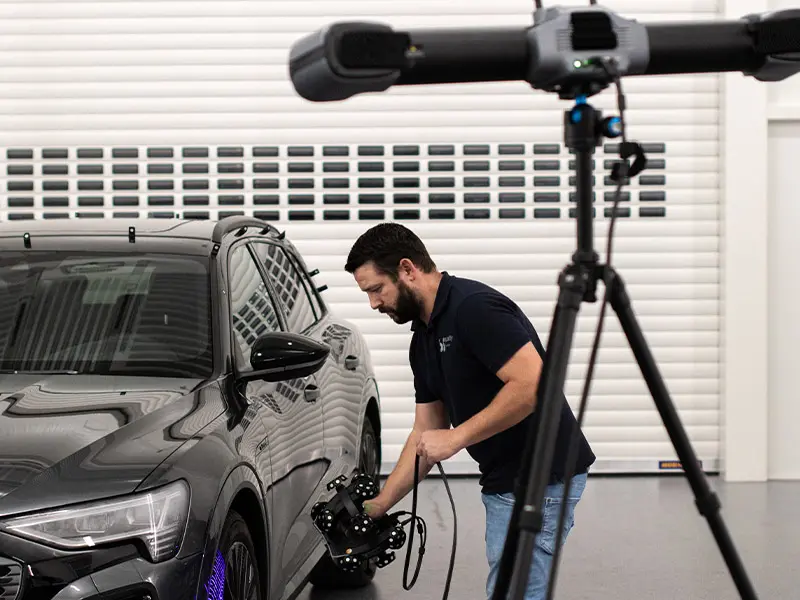
Higher Accuracy
TrackScan-Sharp offered significant advantage through its capacity to deliver accurate and comprehensive data.
By capturing the complete geometry of vehicles, including their shape, contours, and any potential irregularities, it facilitated precise planning and ensured an optimal fit within load carriers.
This meticulous approach enhanced overall efficiency and effectiveness in transportation logistics.
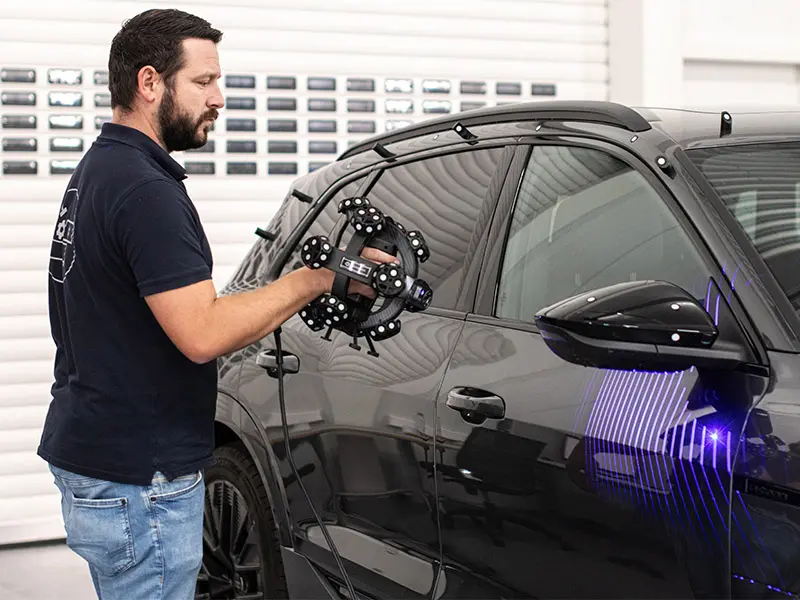
High Adaptability to Reflective Surfaces
Dark and reflective surfaces in 3D scanning present challenges due to their light-absorbing or highly reflective properties. These surfaces interfere with accurate data acquisition, resulting in poor point cloud quality.
Thanks to TrackScan-Sharp’s robust algorithm and anti-interference blue lasers, the engineer scanned the entire car without using sprays.
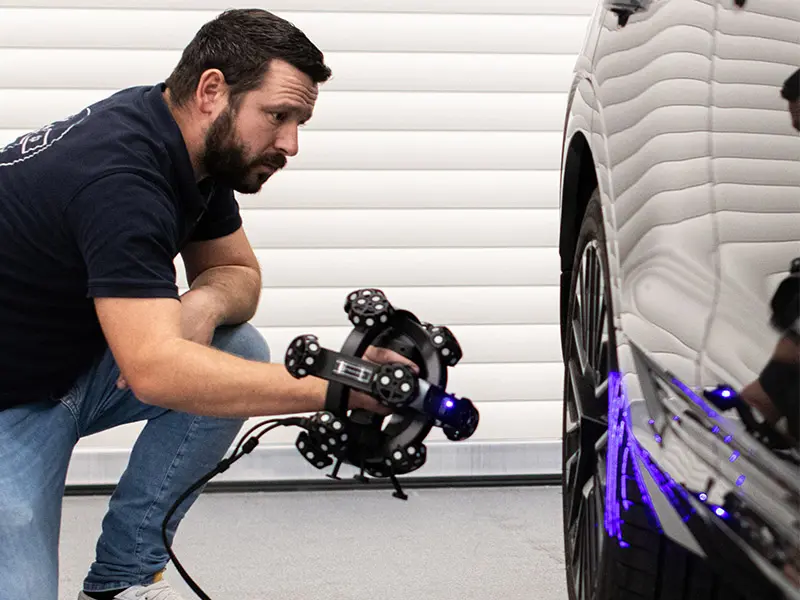
Less Susceptibility to Errors
TrackScan-Sharp features user-friendly operations and error-free measurements. and its capacity to reduce human error.
When measurements are taken manually using a tape measure, there is an inherent risk of inaccuracies due to misreading or measurement mistakes.
These errors can result in flawed estimations, which, in turn, can adversely impact transportation efficiency. By relying on precise data from a 3D laser scanner, the occurrence of human error was minimized, leading to more reliable measurements.
Efficient Evaluation
The evaluation of 3D data was facilitated by specialized software. For instance, with the “Minimum bounding box” function of the software, the engineer automatically enveloped the 3D data in a cuboid. The resulting dimensions were added to the edges of the cuboid.
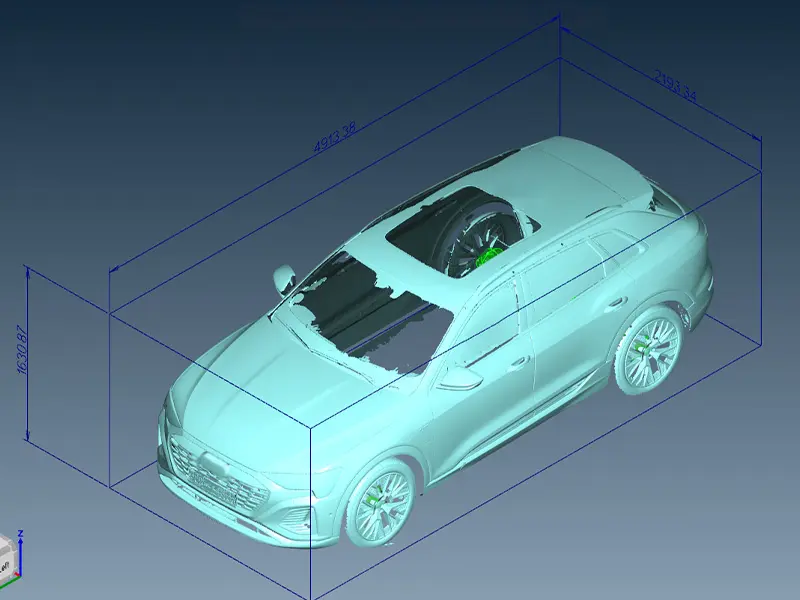
Implementation and Results
The logistics company seamlessly incorporated the TrackScan-Sharp into their operational workflow. The integration process was streamlined and efficient. This advanced and portable 3D scanner not only captured detailed models of vehicles but also allowed for their preservation.
These saved models serve as valuable resources for subsequent analysis and strategic planning. In scenarios where transport conditions evolve or new vehicles are introduced, these reference models aided in identifying and resolving potential issues proactively. As a result, the logistics process gained enhanced flexibility and adaptability.
Conclusion
Overall, the adoption of the 3D scanner TrackScan-Sharp represents a significant leap forward for the logistics industry. Beyond efficiency gains, this 3D scanner enhances measurement accuracy, flexibility, and reliability.
By meticulously capturing vehicle dimensions and providing detailed models, it contributes to optimized transport planning and execution, ultimately elevating the overall performance of the logistics company.


